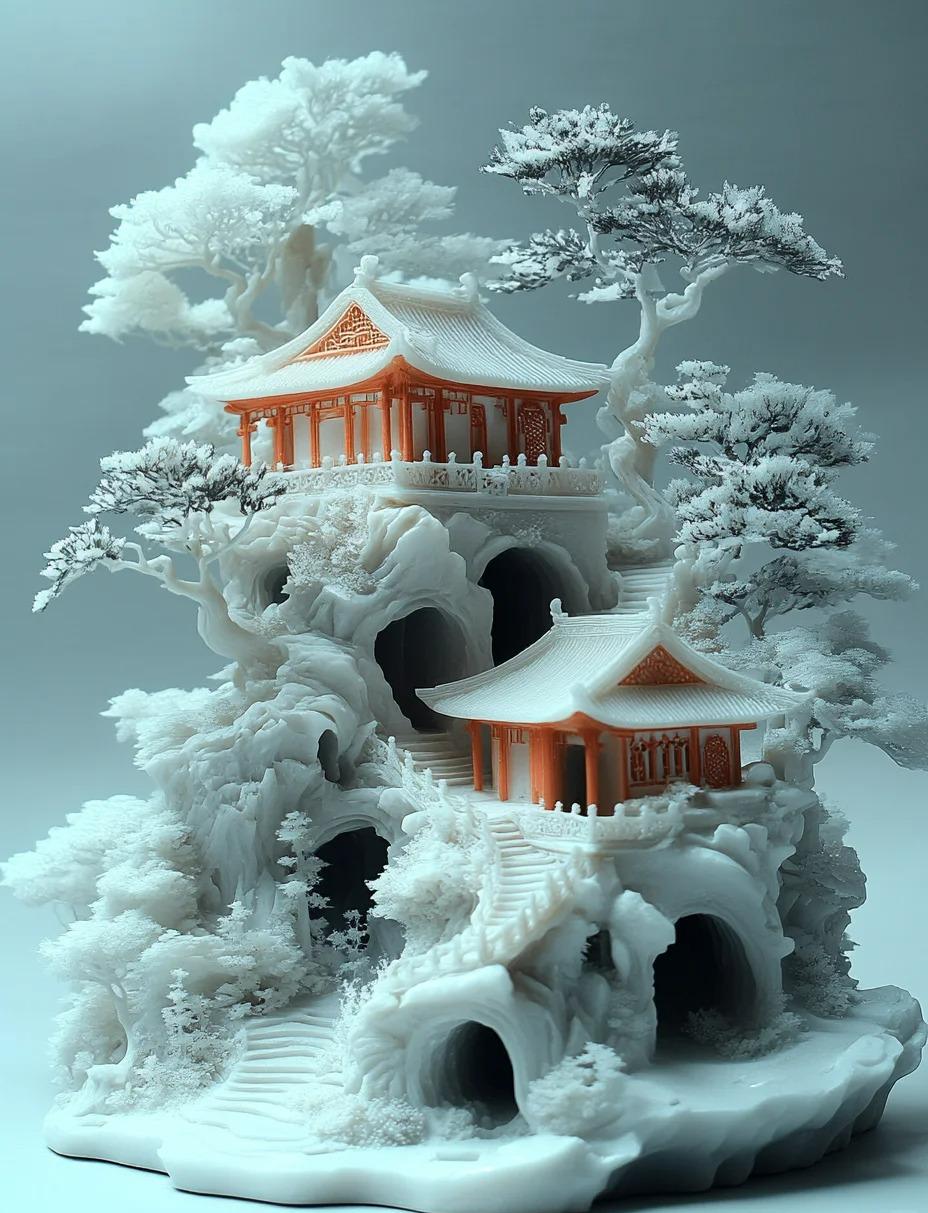Introduction to Jade Carving
Jade carving, an art form deeply rooted in Chinese culture, has been practiced for over 8,000 years. This lustrous stone, revered as the “Stone of Heaven,” holds a unique place in Chinese art and symbolism, often associated with virtue, beauty, and immortality.
Two main types of jade are used in carving:
- Nephrite: Prized for its subtle colors and durability
- Jadeite: Valued for its vibrant hues and translucency
Throughout history, jade has been crafted into ornaments, ritual objects, and even burial suits for emperors, reflecting its significance in both life and death.

The Art of Jade Carving
Traditional jade carving techniques involve a meticulous process:
- Selection of the jade piece
- Initial shaping with abrasive tools
- Detailed carving with fine instruments
- Polishing to achieve the desired luster
Modern carvers now employ advanced tools like diamond-tipped drills and ultrasonic carvers, allowing for more intricate designs. However, the essence of jade carving remains a harmonious blend of artistic vision and technical skill.
Becoming a master jade carver requires years of training, combining knowledge of jade properties, carving techniques, and cultural symbolism. Many apprentices spend decades honing their craft before achieving mastery.

Symbolism and Motifs in Jade Carvings
Jade carvings often feature rich symbolism, with popular motifs including:
| Symbol | Meaning |
|---|---|
| Dragon | Power and imperial authority |
| Phoenix | Feminine grace and rebirth |
| Bat | Good fortune and happiness |
| Bamboo | Resilience and integrity |
These symbols are deeply intertwined with Chinese philosophy and religion. Confucian values of virtue and harmony, Taoist concepts of nature and balance, and Buddhist principles of enlightenment all find expression in jade art.
Famous Jade Artifacts and Masterpieces
Some of the most renowned jade artifacts include:
- The Jade Burial Suits of the Han Dynasty, composed of thousands of jade plates sewn together with gold wire
- The Jadeite Cabbage of the Qing Dynasty, a masterpiece of naturalistic carving
- The Jade Mountain of the Qianlong Emperor, depicting a complex landscape scene
Contemporary jade artists continue to push boundaries, creating works that blend traditional techniques with modern aesthetics. Artists like Shi Jianmin have gained international recognition for their innovative jade sculptures.

Jade Carving Centers and Markets
Major jade carving centers in China include:
- Yangzhou: Known for its delicate, translucent carvings
- Suzhou: Famed for intricate jade landscapes
- Hetian: The source of prized white nephrite jade
For jade enthusiasts, markets like Beijing’s Panjiayuan or Guangzhou’s Hualin offer a treasure trove of jade items. International jade exhibitions, such as the Hong Kong Jewellery & Gem Fair, showcase the finest jade pieces from around the world.

Purchasing and Collecting Jade
When buying jade, consider these tips:
- Look for a smooth, waxy luster
- Check for consistent color and translucency
- Be wary of pieces that are too perfectly colored or flawless
Factors affecting jade value include color intensity, translucency, and craftsmanship. To maintain your jade collection, avoid harsh chemicals and store pieces separately to prevent scratching.
Ethical sourcing has become increasingly important in the jade trade. Responsible collectors should seek pieces with clear provenance and avoid jade from conflict regions.

Jade Carving as Cultural Heritage
Efforts to preserve traditional jade carving techniques include:
- Government-sponsored programs to train new generations of carvers
- Inclusion of jade carving in China’s list of intangible cultural heritage
- Museums and cultural centers offering jade carving demonstrations
Tourists can experience this ancient art through workshops in cities like Suzhou or Beijing, where they can try their hand at basic jade carving techniques.
As we move into the digital age, jade carving adapts while maintaining its cultural significance. Virtual exhibitions and 3D-printed jade replicas offer new ways to appreciate this art form, ensuring its relevance for future generations.
The art of jade carving stands as a testament to China’s rich cultural heritage. From ancient burial rites to modern artistic expression, jade continues to captivate with its beauty and symbolism. As you explore the world of jade carving, remember that each piece tells a story – of skilled artisans, enduring traditions, and the timeless allure of this precious stone.





